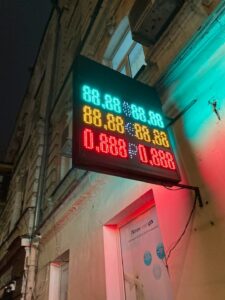The Basics of Fundamental Analysis in Forex: A Beginner’s Guide
Forex trading is a complex and dynamic market. Traders around the world engage in this market to speculate on the value of different currencies. While there are several approaches to trading in forex, one of the most important and widely used methods is fundamental analysis.
Fundamental analysis in forex involves analyzing economic, social, and political factors that influence the value of currencies. This approach is based on the belief that the value of a currency is determined by the overall health and strength of the country’s economy. In this article, we will explore the basics of fundamental analysis in forex and provide a beginner’s guide to understanding this critical aspect of trading.
Understanding Economic Indicators
Economic indicators play a crucial role in fundamental analysis. These indicators provide insights into the economic performance and health of a country. Traders use these indicators to assess the current and future prospects of a currency.
Some essential economic indicators include GDP (Gross Domestic Product), inflation rate, interest rates, employment data, trade balance, and consumer sentiment. By analyzing these indicators, traders can gauge the overall strength or weakness of a country’s economy, which can have a direct impact on the value of its currency.
Analyzing Central Bank Policies
Central banks play a significant role in determining a country’s monetary policy. Traders closely monitor the decisions and actions of central banks as they can have a substantial impact on a currency’s value.
Central banks use tools like interest rate changes, quantitative easing, and open market operations to manage their country’s economy. By keeping a close eye on central bank announcements, traders can gain insights into the future direction of a currency. For example, if a central bank signals a potential interest rate hike, it could attract foreign investors and strengthen the currency.
Monitoring Geopolitical Events
Geopolitical events can significantly impact currency markets. Political instability, conflicts, elections, and policy changes can create volatility in the forex market. Traders need to stay informed about global events and assess their potential impact on currencies.
For example, if a country is facing political turmoil or civil unrest, it can lead to a decrease in investor confidence, which may weaken the currency. On the other hand, positive geopolitical developments, such as trade agreements or political stability, can strengthen a currency.
Currency Correlations
Understanding currency correlations is another crucial aspect of fundamental analysis in forex. Currencies are often traded in pairs, and their movements can be influenced by various factors. Traders need to analyze these correlations to make informed trading decisions.
For instance, if the US dollar strengthens against the Euro, it may also impact other currency pairs that involve the US dollar. Traders need to consider these correlations when analyzing the fundamental factors of a currency.
Using Economic Calendars
To stay updated with economic indicators, central bank announcements, and geopolitical events, traders often use economic calendars. These calendars provide a schedule of upcoming events and economic data releases that can affect currency markets.
By using an economic calendar, traders can plan their trading strategies and be prepared for potential market movements. It is essential to understand the significance of each event and its potential impact on currencies.
Conclusion
Fundamental analysis is a crucial skill for forex traders looking to understand the underlying factors that drive currency values. By analyzing economic indicators, central bank policies, geopolitical events, currency correlations, and using economic calendars, traders can make informed decisions and identify trading opportunities.
However, it is important to note that fundamental analysis is not the only approach to forex trading. Technical analysis, which involves analyzing price patterns and historical data, is another commonly used method. Successful forex traders often combine both fundamental and technical analysis to make well-rounded trading decisions.
As a beginner, it is crucial to start with a solid understanding of the basics of fundamental analysis and gradually build on that knowledge. By continuously learning and staying updated with economic news and events, traders can enhance their ability to navigate the forex market successfully.






